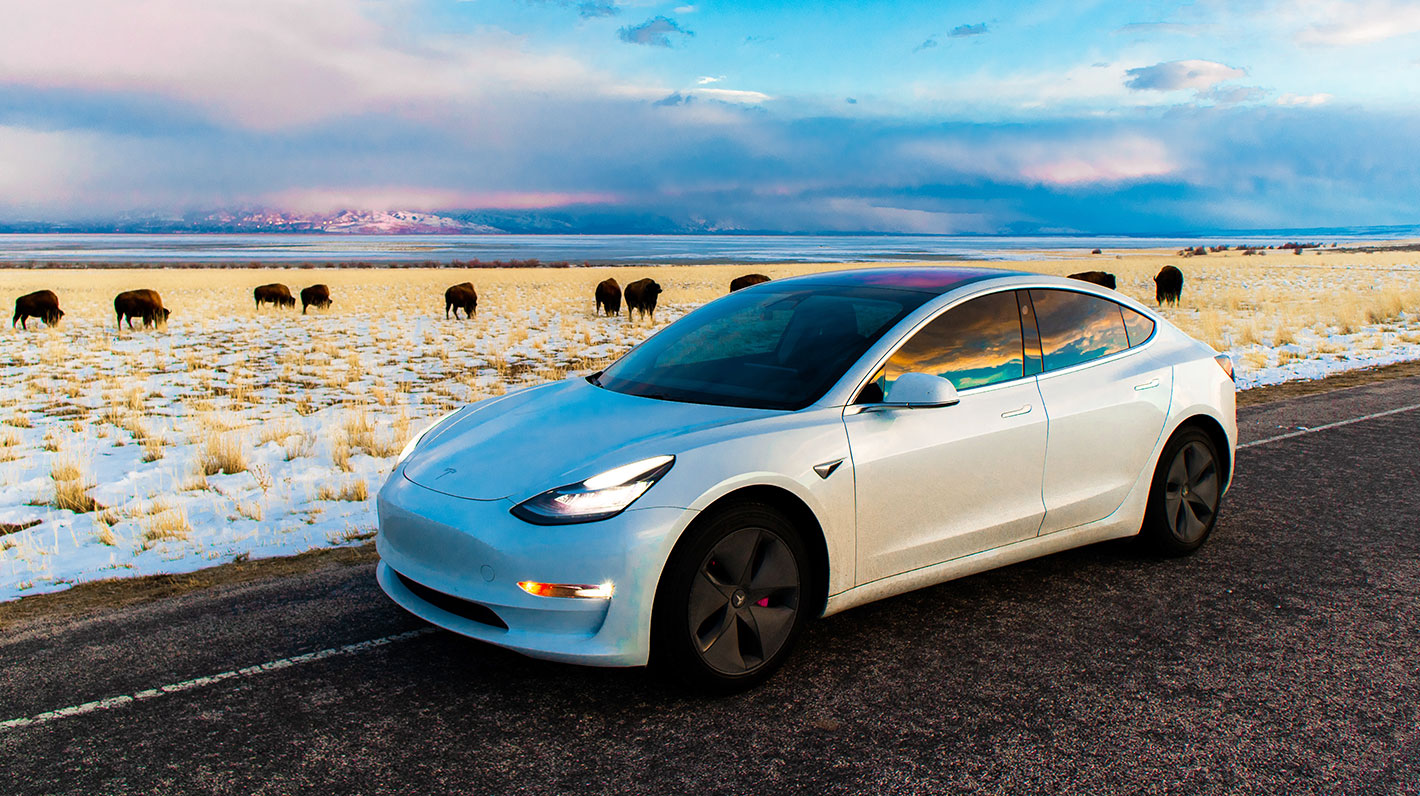Tesla Model 3: all you need to know about its charging capacity
28 March 2019 - 4 minutes to read
The American carmaker’s compact sedan is now marketed and deliverable in Europe. To enhance your Tesla Model 3 experience, find out all about charging the batteries and the facilities available with Chargemap.
Home charging
Like most electric cars, the batteries of your Tesla Model 3 can be charged using a simple household power outlet. But, with a power rating of 2.3 kW, one hour of connection only gives you a range of around 14 kilometers. You need a full day to charge the battery pack of a Long Range version.
With a wall charger, the power rating delivers up to 11 kW – in other words, your battery is fully charged in 6-8 hours. That means in 1 hour, you can gain a range of 70 km.
Superchargers
In Europe, the Model 3 is equipped for fast charging with CCS. The original design of Tesla superchargers is no longer compatible. In December 2018, the American carmaker started adding the cable with Combo connector to their fast chargers in Europe, thereby allowing a Model 3 Long Range battery pack to be fully charged in about one hour most of the time. To charge from empty to 100% full, you have to count on a downtime of nearly 2 hours if the battery is totally drained.
To locate Tesla-friendly stations for your compact sedan, simply use Chargemap or the app available on the onboard computer. You should note that the maximum power rating of slightly over 115 kW delivered by the Tesla superchargers is observed in a range of 12 to just over 50% of the battery capacity. The flow is not constant, starting off slowly, then increasing and slowing down beyond 50%. At 90%, it is already below 25 kW. That’s why it’s better not to wait until the battery is fully charged if you want to drive far without extending your overall travel time.
A new dedicated filter in Chargemap

A new “Tesla CCS Combo” has arrived in the list of filters specially dedicated to the Tesla Model 3. When you activate the filter, you just find info on Tesla Superchargers equipped with CCS connectors.
Destination Charging
In addition to its network of superchargers, Tesla is encouraging managers of hotels, restaurants, shopping centers, casinos, and other establishments to adopt a system called “Destination Charging”. This quite simply entails installing wall connectors similar to those proposed by the maker for home installations. The power rating can reach 11 kW via the Model 3’s onboard charger. It should be noted that Destination Chargers are also usually referenced on Chargemap 📲.
Fast charging stations
The reason why Tesla has decided to equip its European Model 3 for fast CCS charging, is specifically so that Tesla owners can fill up their batteries on the facilities offered by the large networks currently expanding throughout Europe such as Ionity and Fastned.
In France, this configuration also opens the door to most fast charging stations on networks run by the energy syndicates and the majority of those set up in the carparks of supermarkets and shopping centers. The Chargemap app helps you find fast third-party chargers with a good connector. Most of these facilities have a power rating limited to around 50 kW (compared to a useful rate of nearly 120 kW maximum from a Tesla supercharger for about a third of the time required), which increases connection time by about 1.5 – and even more when several vehicles are hooked up at the same time. Excepting emergencies and with due respect for the other EV users, it is also inadvisable to use the T2 connector on fast charging stations as the Model 3 charger will limit the power rating to 11 kW. The electronic systems withstand this operation nicely, but it is counter to the principle of quick turnaround time which calls on users to free up the equipment and places as rapidly as possible to allow other EV users to take their turn.
Accelerated stations
The Tesla Model 3 can also be charged at accelerated stations. Here again, the power rating will be limited to 11 kW, which means 6-8 hours of connection if you want to fill up completely. It remains to be seen if the charging points and places available can cope with this type of usage depending on turnaround times at the stations. A quick tip to get the most out of these facilities – in addition to the cable with Type 2 / Type 2 3-phase connector which you should always have on you, kit yourself out with what you need for Type 3 charging points — in France — (cable with Type 3 / Type 2 3-phase connector). This means you can use the Parisian charging network Autolib’. And also plug into the Type 3 connectors that the old-generation Renault Zoé used virtually exclusively at ultra-fast charging stations – they are occupied less and less these days!
Chargemap wishes you a safe journey in your Tesla Model 3
Whatever your EV model, it’s important to be aware of all the charging options it can accept. And especially the downtime required. All of us in the Chargemap team hope that this article is of help to the proud owners of a Tesla Model 3.


Very good information for new Tesla M3 owners. Well written.